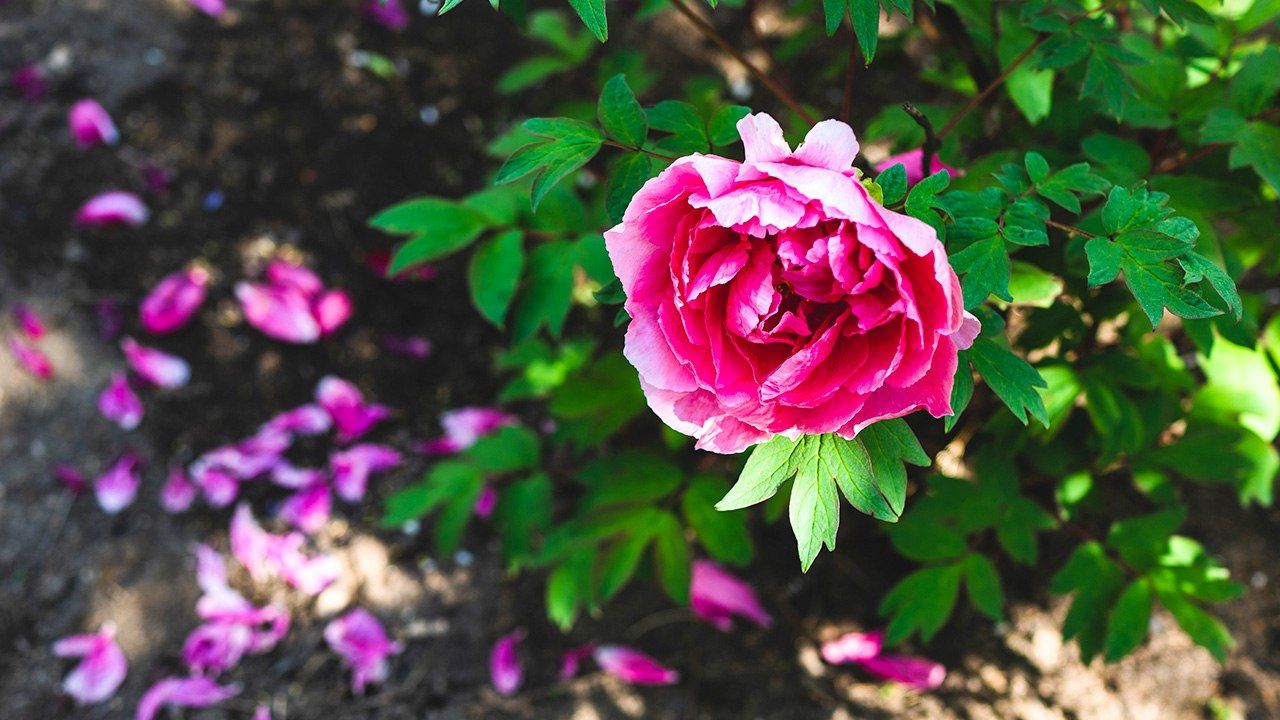
A Journey Through Japanese Haiku
Peony Petals
Culture Environment Lifestyle- English
- 日本語
- 简体字
- 繁體字
- Français
- Español
- العربية
- Русский
牡丹散て打かさなりぬ二三片 蕪村
Botan chirite / uchikasanarinu / ni san pen
Peonies scatter—
two, three petals
settle together(Poem by Buson, written in 1769.)
Peonies bloom in early May (traditionally the beginning of summer in Japan). The large blossoms are commonly known as the “king of flowers” and are a popular subject for pictorial art. Buson’s haiku finds the beauty of the magnificent blooms in their fallen petals, gathered in twos and threes on the ground, where they still appear vibrant. One imagines clusters of petals above, on the verge of tumbling to earth.
This haiku is slightly irregular with a 6-7-5 form, but the use of chirite to describe falling rather than chitte conveys a sense of stillness. Buson’s disciple Kitō notes the technique in having the petals falling on top of each other, while ni san pen (two, three) recalls the sound of botan or peony, the poem’s subject. The poem may seem to be straightforward representation, but is actually highly crafted.
What color are the peonies in the poem? It is tempting to imagine the purity of white flowers, but Buson’s peonies are typically red. He must have appreciated the intensity of their beauty. He displays an extraordinary expression in the following haiku: En’ō no / kuchi ya botan o / hakan to su (King Enma’s mouth / ready to spit out / peonies). It captures the force of the red flowers that seem to press toward those viewing them, as if from the mouth of the king of hell.
(Originally published in Japanese. Banner photo © Pixta.)